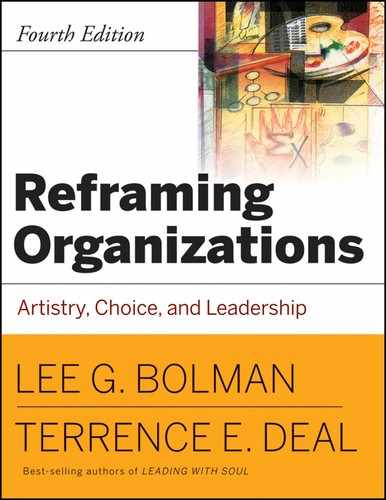One of our goals is to cover the most important and influential works in the field and cite or summarize them where appropriate. There is no perfect way to determine the best or most important books and articles, but we can assess which ones seem to be most often read by scholars and by the general public. We developed two different lists: the greatest hits as rated by scholars, and the popular favorites as represented in Business Week's annual list of business best-sellers.
Our list of scholars' "greatest hits" relies on citation analysis—how often a work is cited in the scholarly literature. This method is often used to measure scholarly impact. We began by conducting a citation analysis of the two journals that Trieschmann, Dennis, and Northcraft (2000) cited as the most visible and influential in the field of management: Academy of Management Journal (AMJ; for the years 1996 to 2004) and the Administrative Science Quarterly (ASQ; for the years 1993 to 2004). We combined the analyses from those two journals to get a list of the top articles and books based on citation frequency. (In identifying our top works, we excluded purely methodological works that dealt with statistical analysis or research methods.)
We then conducted an additional analysis using Google Scholar (GS), which provides a broadly inclusive analysis of citation data for scholarly work. This gave us three separate rankings: AMJ, ASQ, and GS. The first two are specific to the field of organization studies. The GS data provide a broader indication of influence both within and beyond the management field. For the items in our top twenty-five, the correlations among AMJ, ASQ, and GS are positive but low (ranging between .09 for AMJ/ASQ to .16 for ASQ/GS). We believe this reflects reality. Scholars who publish in different journals or come from different disciplines have different tastes and prefer different sources. It also suggests that our results are partly arbitrary, since a different set of journals might have produced different results. The results for the top twenty are shown in Exhibit A.1.
The results are not definitive, but they provide a broad estimate of the works that have had the greatest influence on scholars. To reduce our list to a single rank order, we averaged the rankings across the three separate data bases. For example, our highest ranking went to an article by DiMaggio and Powell (1983) that ranked first in AMJ and ASQ and tenth in GS.
Though the citation analysis is based on articles published in the 1990s and early 2000s, many of the works that appear at the high end of the list were published much earlier, in the 1960s, 1970s, and 1980s. The oldest item in the top twenty was published in 1958; the newest, in 1989. The results suggest that there is typically a lag of a decade or more before a new work can become a widely cited "classic."
What scholars like and what the public reads are two very different things. For each of the years 1996 to 2006, we have identified a book at or near the top of the Business Week best-seller list (see Exhibit A.2). Normally, we chose a book that occupied the number one position on the hardcover or paperback list. But we chose books at a lower rank under two conditions: the top rank focused on topics outside the field of management and organizations (for example, works on personal finance), or the same book had held the top position for more than one year (which was particularly the case with Who Moved My Cheese? by Spencer Johnson).
Not surprisingly, the popular best-sellers are often shorter and simpler than the scholars' picks. They are pragmatic and often emphasize people issues that fall in the human resource or symbolic frames, whereas the scholars' top choices emphasized symbolic, political, and structural issues. Typically, the popular best-sellers are upbeat. The message is, "You can make a difference." The scholars often prefer works with the opposite message: "You probably won't make much difference because you and your organization are controlled by much larger social and economic forces."


